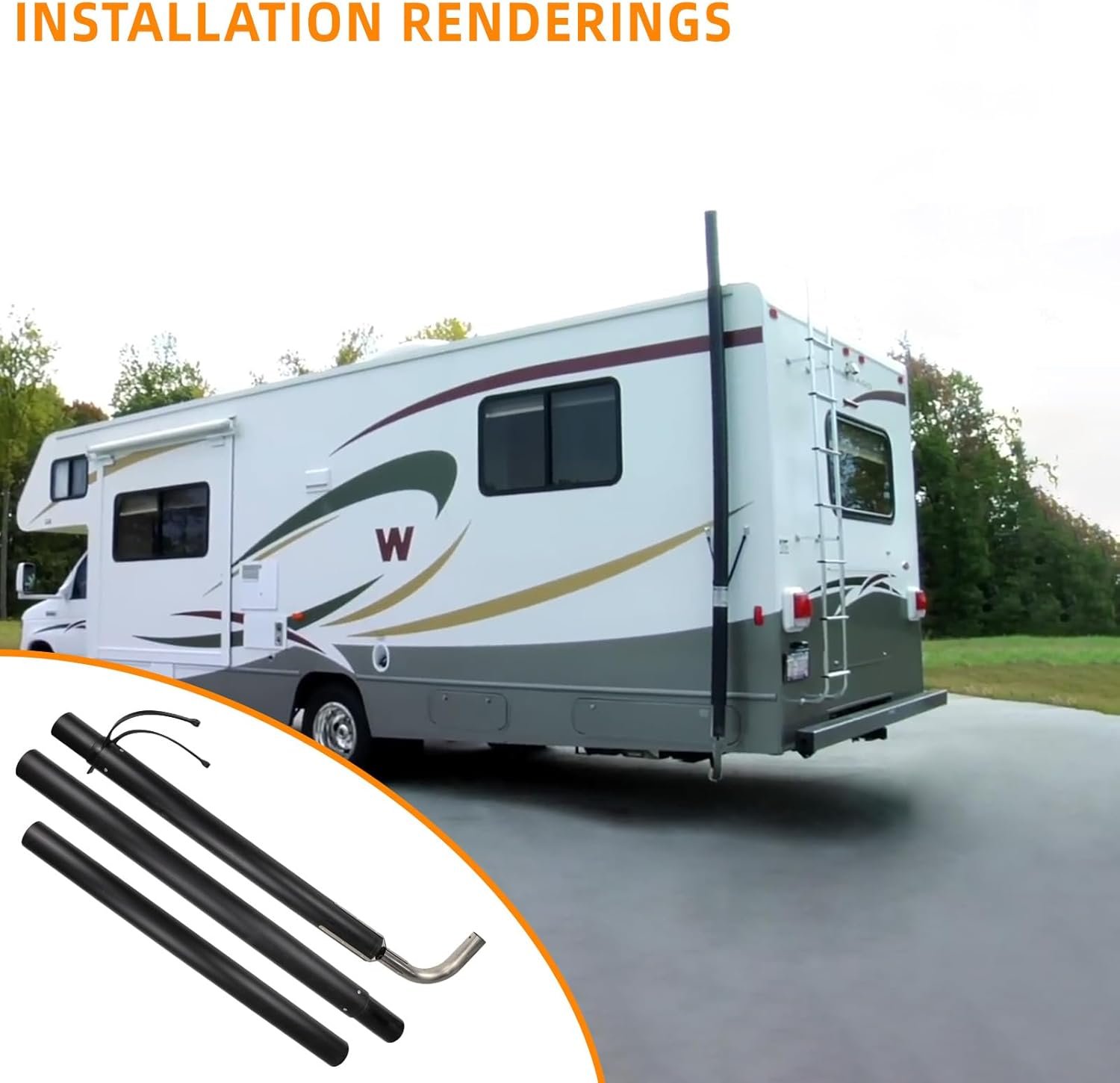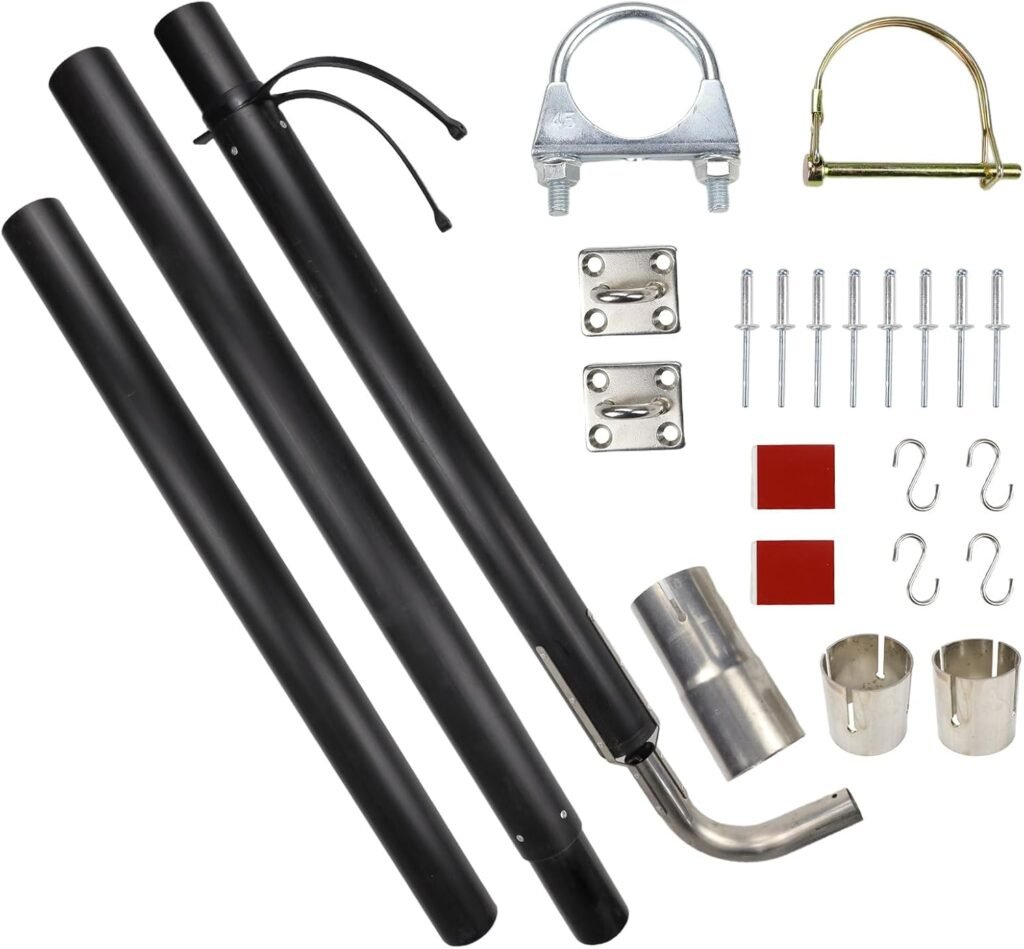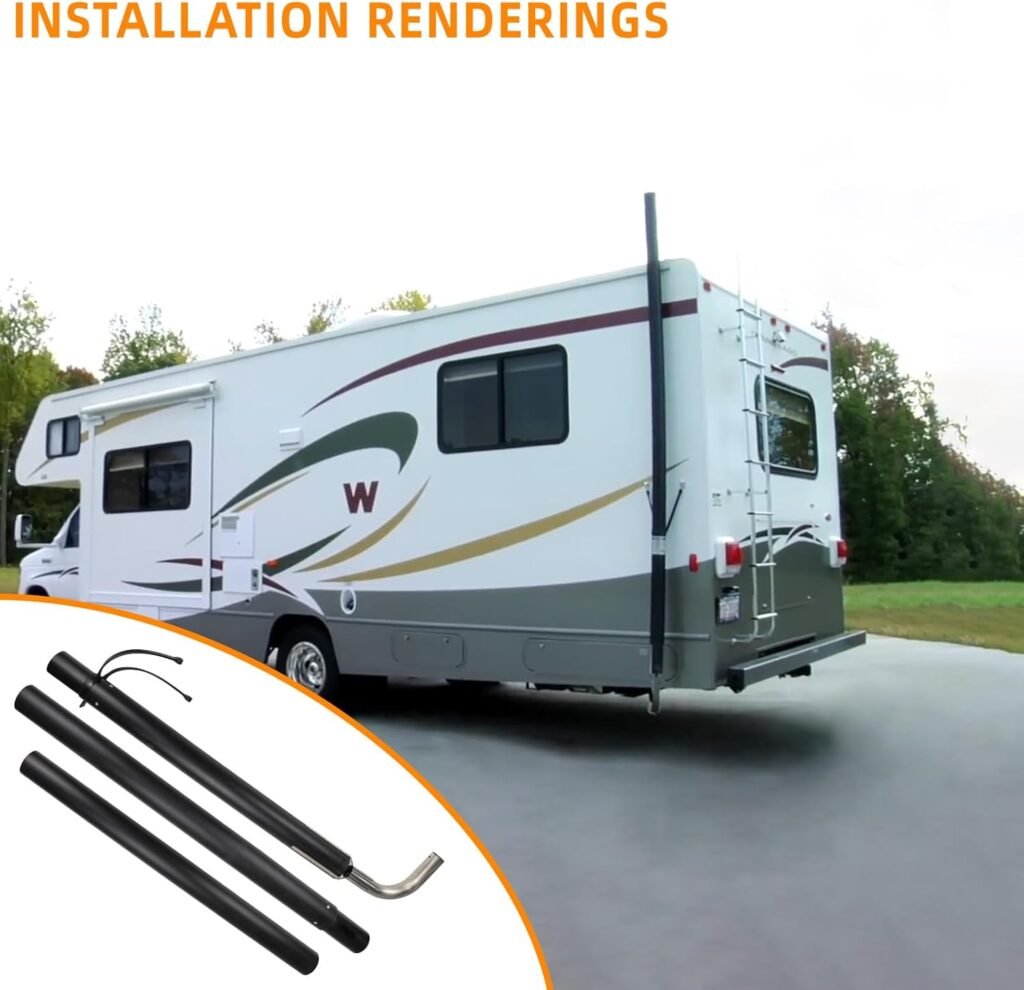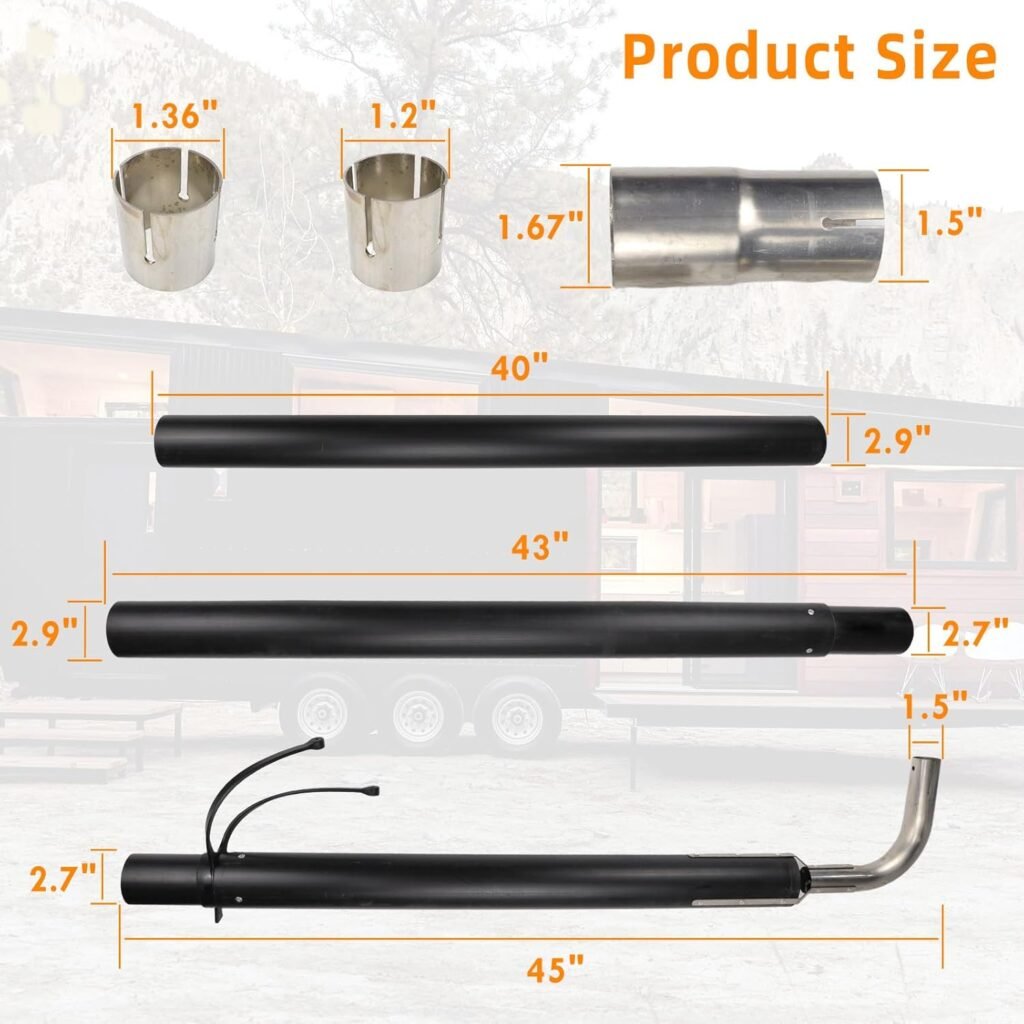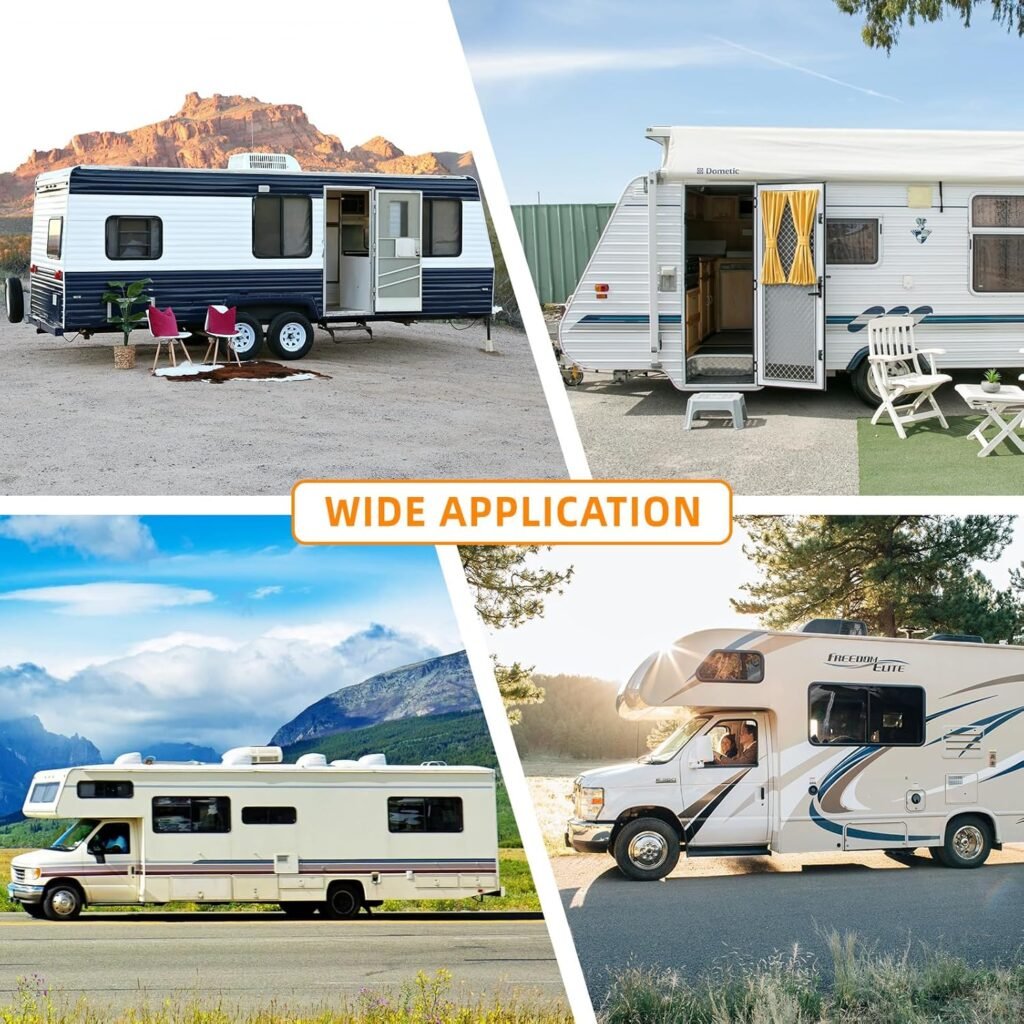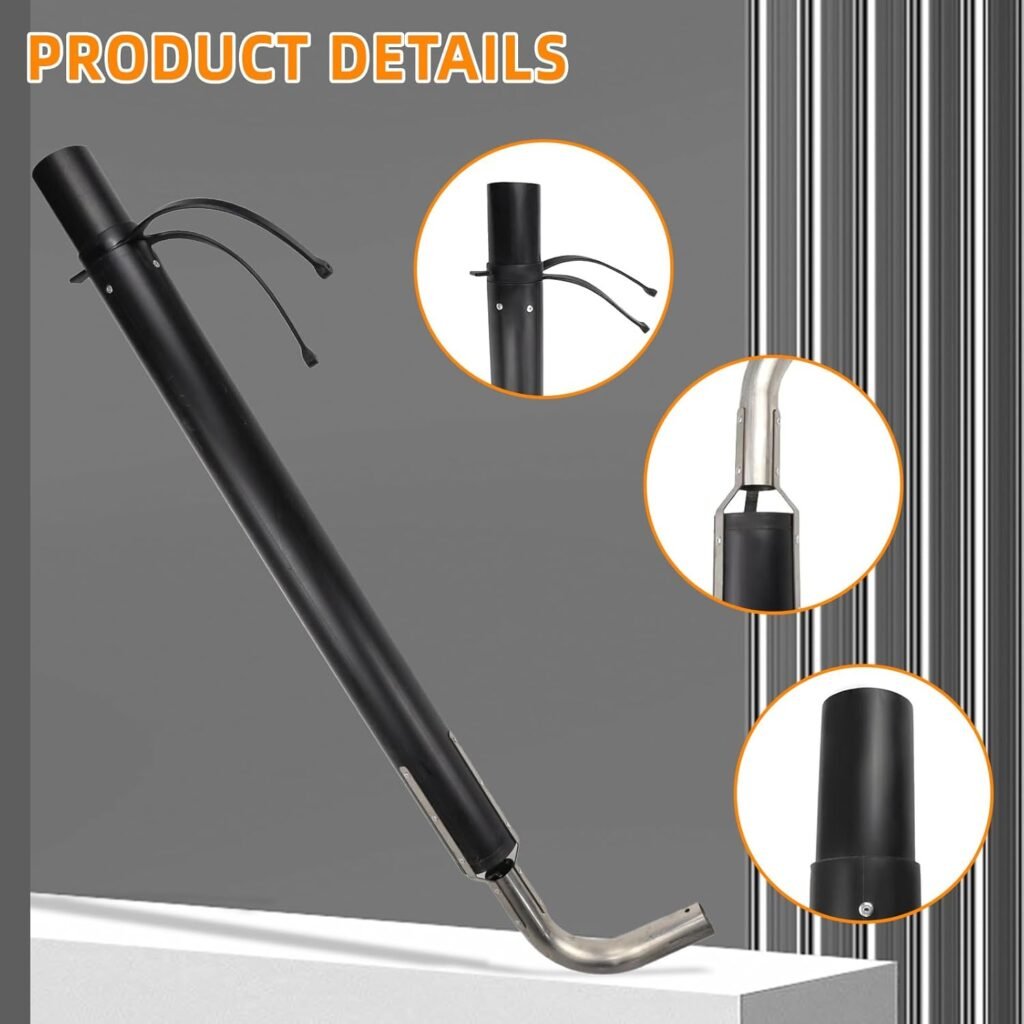44461 RV Generator Exhaust Venting Kit Review
44461 RV Generator Exhaust Venting Kit Review
Are you tired of noisy, inefficient, or potentially unsafe exhaust on your RV and wondering whether the “44461 RV Generator Exhaust Venting System Extension Kit Compatible with Most RV Exhaust Systems” is the fix you need?
Product overview
You want a clear sense of what this kit is and what it does. The 44461 RV Generator Exhaust Venting System Extension Kit is designed to replace part number 44461 and to work with most RV exhaust systems. Its primary purpose is to extend and route exhaust away from the motorhome, improving safety and reducing noise and emissions close to living spaces.
What this kit aims to solve
You know that a broken or failing exhaust system can cause louder engine noise, decreased fuel economy, higher emissions, and safety hazards due to exhaust entering your living area. This kit attempts to prevent those issues by providing a durable extension and proper venting path for exhaust gases to exit away from the coach.
Who this is for
If you own an RV or motorhome with a generator exhaust that needs extension or repair, this kit is aimed at you. It’s marketed as compatible with most RV exhaust systems, which makes it useful for DIYers, RV owners who do light repairs, and mechanics who need a standardized replacement part.
Key features
You want to know the standout features quickly. This kit replaces part number 44461 and is described as compatible with most RV exhaust systems. It aims to emit exhaust gas safely, reduce noise, purify exhaust gas, and provide shock absorption and buffering.
Emission management and safety
The main function is to send exhaust gases away from occupied areas so you don’t inhale fumes. You’ll get a safer cabin environment when the extension kit is properly installed because it helps prevent exhaust from entering the living space.
Noise reduction
Taking the exhaust route outside and providing a smoother exit path reduces backpressure and noise. You’ll likely notice a drop in generator noise inside the motorhome when the extension is fitted correctly.
Shock absorption and buffering
You’ll see that the kit claims to include features that buffer vibration and absorb shocks from the exhaust system. That reduces stress on mounting points and can prolong the life of adjacent components.
Purification and emissions control
While the kit itself doesn’t add catalytic converters or filters, it supports the exhaust system’s role in purifying gases by maintaining correct routing and reducing the chance of leaks. You’ll get a cleaner exhaust flow when the system is intact.
Compatibility and fit
You want confidence that it will fit your RV. The product states it’s compatible with most RV exhaust systems, and it replaces part number 44461. However, compatibility can vary depending on your RV model, generator make, and custom exhaust routing.
How to check compatibility
Before buying, you should measure your existing exhaust outlet, review manufacturer part numbers, and compare mounting points. Confirming the part dimensions and connector types helps you avoid returns and fitment headaches.
Common fit issues
You may encounter variations in bracket spacing, pipe diameter, or generator exit orientation. If your RV has custom piping or aftermarket parts, you might need adaptors or slight modifications during installation.
Build quality and materials
You want durability for something exposed to heat, vibration, and road conditions. The kit is designed for the harsh conditions typical of RV usage, with materials intended to resist corrosion and high temperatures. Assessing material specs is important for long-term reliability.
Corrosion resistance
You’ll want components that resist rust since moisture and road salt can aggressively corrode exhaust parts. The kit typically uses materials and coatings suited to outdoor and high-temperature environments.
Heat tolerance
Exhaust components must endure sustained high temperatures. You’ll expect the extension kit to be rated for generator exhaust temperatures and to include heat-resistant joints and clamps.
Installation process
You prefer straightforward steps you can follow. Installation difficulty can range from simple clamp-on work to moderate fabrication if adaptors or welding are needed. Many RV owners can install the kit with common hand tools.
Tools you’ll need
Plan to have a ratchet set, screwdrivers, clamps, heat-resistant sealant, and possibly a hacksaw or tubing cutter. If welding or bracket modification is required, you’ll need the appropriate equipment or professional help.
Typical installation steps
You’ll remove the old exhaust extension (if present), test fit the new components, secure clamps and brackets, and seal joints to prevent leaks. After installation, you’ll start the generator, check for leaks, and ensure the exhaust exits away from doors and vents.
Time required
Expect about 1–3 hours for a typical installation if no modifications are required. If adaptors, bracket fabrication, or welding are necessary, plan for longer or consider professional installation.
Performance in real-world use
You want practical outcomes, not just promises. In use, the 44461 extension kit should reduce in-cabin exhaust smell, lower interior noise levels, and improve the overall safety of exhaust routing. Real-world performance depends heavily on proper installation and the condition of the rest of the exhaust system.
Impact on noise and comfort
Once correctly installed, you’ll likely notice a reduction in noise and vibration transmitted into the living area. The shock absorption and buffering features help limit vibration transfer and make generator operation less intrusive.
Effect on fuel economy and power
While the kit itself won’t dramatically change engine efficiency, it may reduce backpressure slightly and help your generator operate as intended. Over time, avoiding leaks and maintaining proper exhaust routing can marginally help fuel economy and power delivery.
Maintenance and longevity
You want to know how long the kit will last and what upkeep is necessary. The recommended service life for typical RV exhaust systems is about 3–5 years or 60,000–100,000 kilometers, but this varies based on usage, environment, and build quality. Regular inspection will extend the service life.
Routine checks
You should inspect the kit at least twice a year, and after any rough road trips, for cracks, rust, loose clamps, or signs of leaking exhaust. Check mounting brackets and heat shields for integrity.
How to prolong life
To keep the kit functioning longer, you’ll keep components clean, ensure clamps remain tight, and replace worn gaskets. Avoid running the generator in enclosed or damp conditions for long periods, and treat rust immediately.
Safety considerations
You need to prioritize safety whenever you work with exhaust systems. Improperly routed or leaking exhaust can cause carbon monoxide to enter your living area, which can be deadly. The extension kit aims to prevent this when correctly installed.
Carbon monoxide prevention
You’ll want to test for exhaust intrusion using a CO detector inside your RV. After installation, run the generator and walk through the living space with a CO monitor to verify safe operation.
Heat and fire protection
Because exhaust components get hot, ensure no combustible materials are near the exhaust path. You’ll use heat shields or deflectors if necessary and maintain a safe clearance from tanks, lines, and flammable materials.
Pros and cons
You want a balanced view to make an informed decision. Below are the main benefits and potential drawbacks based on functionality, fit, and real-world usage.
Pros
- You get a compatible replacement for part number 44461 designed for most RV exhaust systems.
- The kit helps route exhaust away from living areas, improving safety and comfort.
- It reduces noise and vibration inside the vehicle.
- Components are built to withstand heat and road conditions.
- Installation can be DIY-friendly for many owners.
Cons
- Compatibility isn’t universal; variations in generator/exhaust layouts may require adaptors.
- If your existing exhaust is heavily corroded or custom-fitted, you might need professional help.
- The kit itself doesn’t add catalytic filtering; it only routes exhaust, so emissions control depends on the rest of the system.
Value for money
You want to decide whether this kit is worth the expense. If your exhaust is compromised, this kit can be a cost-effective way to restore safe exhaust routing and comfort. For many RV owners, replacing a worn or damaged extension is cheaper than repairing more extensive exhaust damage later.
Cost factors to consider
You’ll weigh the upfront kit price against potential savings from reduced fuel waste, less interior damage from heat or fumes, and decreased likelihood of expensive emergency repairs. Professional installation adds to the cost but may be worth it for complex setups.
Comparison with alternatives
You want to know how this kit stacks up against other solutions. There are OEM-specific replacements, universal exhaust kits, and custom-fabricated options. The 44461 kit sits between universal kits and OEM parts by focusing on compatibility with most systems while providing a targeted replacement part.
OEM vs universal kits
If you prioritize a guaranteed fit, OEM parts specific to your model might be better, but they’re often more expensive. Universal kits may be cheaper but require modifications. The 44461 kit aims to offer a balance: relatively easy fit for many users without the premium OEM price.
Custom fabrication
If your RV has unique exhaust routing or older custom work, a fabricated solution might be necessary. You’ll pay more and may need a shop with exhaust fabrication capability, but you’ll get a system tailored to your RV.
Installation troubleshooting
You want help solving common issues that come up during installation. Here are typical problems and how you can address them.
Misaligned flanges or brackets
If holes don’t line up, you’ll either re-drill mounting points carefully or use slotted brackets that allow adjustment. Don’t force components; that can cause stress fractures.
Diameter mismatch
If pipe diameters don’t match, use a reducer or coupler to create a secure transition. Hose clamps and high-temp sealant can help ensure a leak-free joint.
Leaks after installation
If you detect exhaust leaks, you’ll retighten clamps, inspect gaskets, and replace any cracked sections. Applying high-temperature exhaust sealant to joints can reduce minor leaks.
Installation checklist
You want a concise list to follow during installation. Use this to stay organized and reduce errors.
- Verify part number and fit before starting.
- Gather tools: ratchet set, screwdrivers, clamps, hacksaw/tubing cutter, high-temperature sealant.
- Park on level ground, ensure generator is off and cool.
- Remove old components and clean mating surfaces.
- Test-fit new parts without final tightening.
- Tighten clamps and secure brackets, leaving room for thermal expansion.
- Start generator, check for leaks and unsafe exhaust flow.
- Re-inspect after first run and after 50–100 miles of travel.
Detailed specifications (quick reference table)
You like organized data to compare and check specifics quickly. Below is a summarized table that breaks down the main areas you’ll want to review before buying.
| Item | Details |
|---|---|
| Product name | 44461 RV Generator Exhaust Venting System Extension Kit Compatible with Most RV Exhaust Systems |
| Replace Part Number | 44461 |
| Compatibility | Compatible with most RV exhaust systems (check dimensions and mounting) |
| Primary functions | Emit exhaust gas, reduce noise, purify exhaust gas routing, shock absorption, buffering, prevent exhaust entry into living space |
| Typical service life | 3–5 years or 60,000–100,000 km (varies with environment and use) |
| Installation difficulty | Moderate (DIY possible; professional recommended for complex systems) |
| Common materials | Heat-resistant metals, corrosion-resistant coatings, clamps and gaskets |
| Typical installation time | 1–3 hours (longer if modifications required) |
| Maintenance | Inspect twice a year; check clamps, gaskets, and supports |
Frequently asked questions
You probably have practical questions before you buy or install. Here are answers to common concerns.
Will this kit fit my RV generator?
It’s advertised as compatible with most RV exhaust systems, but fit depends on your specific generator outlet, pipe diameter, and mounting orientation. Measure and compare before purchase.
Do I need to weld anything?
Most installations rely on clamps and brackets, but if your setup is older or custom, welding may be required for a secure fit. Decide based on your condition assessment.
Will this reduce emissions?
The kit routes exhaust and helps prevent leaks into the living area, but it does not actively filter or convert pollutants like a catalytic converter would. Emission reduction depends on the entire exhaust system’s condition.
How often should I replace it?
The typical service life of exhaust systems is 3–5 years or roughly 60,000–100,000 km. Replace sooner if you find cracks, excessive rust, or leaks.
Real-user scenarios
You want relatable examples to see how this performs in everyday life. Here are a few typical situations and outcomes.
Weekend RVers
If you use your RV on weekends, you’ll likely see long service life and fewer problems. Properly installed, the kit will reduce generator smell and noise during weekends away.
Full-time RV living
If you live in your RV full-time, you’ll put more wear on the exhaust system. You’ll need more frequent inspections and possibly replacement closer to the 3-year mark.
Cold or salty environments
If you travel in coastal regions or snowy, salted roads, expect faster corrosion. You’ll need to inspect and replace parts more often to avoid failure.
Tips for buying
You want to make a smart purchase that avoids returns and downtime. Follow these buying tips to increase the chance of a successful fit and long-term satisfaction.
- Measure your existing exhaust outlet diameter and check mounting hole locations.
- Compare images and descriptions carefully with your current parts.
- Buy from a seller who offers returns and has good customer support in case the fit is off.
- Keep receipts and part numbers for warranty or future replacement.
Final verdict
You want a concise conclusion to help your decision. The “44461 RV Generator Exhaust Venting System Extension Kit Compatible with Most RV Exhaust Systems” is a practical, often cost-effective replacement for damaged exhaust extensions. It’s well-suited for many RV owners who need to restore safe exhaust routing and reduce interior noise and fumes. Fitment checks and proper installation are crucial, and you should factor in local conditions and usage patterns when estimating service life.
Who should buy this
You should buy this if you want a direct, relatively affordable replacement that works with many RV generators and you’re comfortable performing a moderate DIY installation or paying a shop for a straightforward job.
Who should consider alternatives
You should consider OEM-specific parts or professional fabrication if your RV has a unique or custom exhaust layout, or if you require additional emissions control hardware.
Post-installation checklist and monitoring
You want to ensure ongoing safety and performance after installation. Follow this checklist to keep things in good shape.
- Run the generator and scan for leaks using a CO detector inside the RV.
- Ensure exhaust exit points are directed away from doors, windows, and intake vents.
- Check for vibration transfer or rubbing against body panels during operation.
- Re-tighten clamps after the first warm–cool cycle as metal expands and contracts.
- Inspect periodically for rust, cracks, or loosening of fasteners.
Additional accessories to consider
You may want extra items to ensure optimal performance. These accessories can solve fitment issues and boost safety.
- High-temperature exhaust sealant for minor leaks.
- Heat shields or deflectors to protect nearby components.
- Anti-seize compound on bolts to make future removal easier.
- Universal reducers or couplers for mismatched pipe diameters.
- Replacement clamps and gaskets compatible with high-temperature applications.
Common mistakes to avoid
You want to steer clear of easy errors during purchase or installation. These common mistakes can be costly or dangerous.
- Don’t assume compatibility without measuring and comparing part numbers.
- Don’t overtighten clamps; this can crush pipes and create stress points.
- Don’t ignore heat clearance; ensure combustibles are far from exhaust paths.
- Don’t skip CO testing after installation—safety tests are essential.
Closing summary
You want the bottom line with clear guidance. The 44461 RV Generator Exhaust Venting System Extension Kit is a helpful, generally reliable solution for restoring safe and efficient exhaust routing on many RVs. It improves noise, safety, and comfort when correctly matched to your setup and properly installed. Keep up with inspections and maintenance to maximize life and performance, and consult a professional for complex or heavily modified systems.
Disclosure: As an Amazon Associate, I earn from qualifying purchases.
